How to Teach Narration – Charlotte Mason Mondays
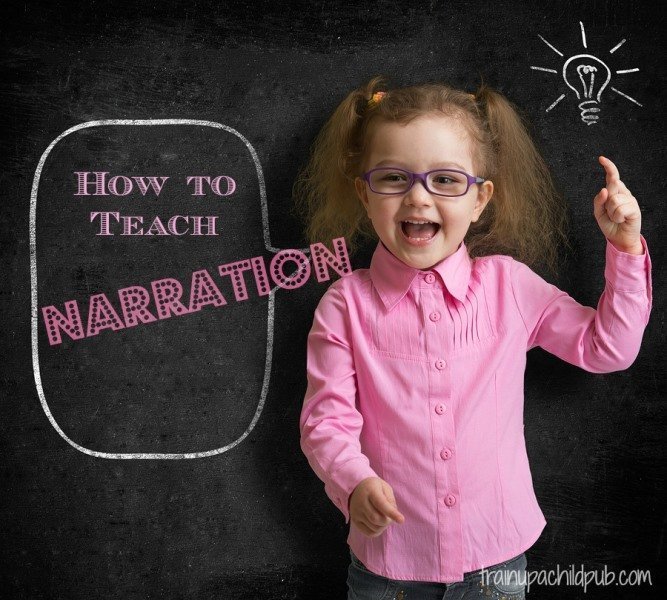
A newbie homeschool mom and I were talking about how to do narration — how simple it was yet how effective.
That’s it? That’s all you have to do?
Said my friend, who was in her second year of homeschooling. (She started her first year using a textbook curriculum. And they hated it.)
She couldn’t believe how simple my suggestion was. How much less time it took. And how little preparation it needed.
And you know me…I believe you can bring your kids’ home education to life and have a happy, thriving home. So I am all for anything you can do to maximize your time by making your homeschooling more effective and leaving time for fun!
What was my pro tip, you asked?
Teach your kids how to do narration. And use their narrations to evaluate how much they understand and are retaining.
If this is new to you, keep reading. By the end of this post, you’ll know exactly how to teach narration.
Narration is the practice of “telling back” what you’ve seen or heard. This is one of the easiest and most effective evaluation methods there is. If your child hears something and narrates what she’s read or heard, you’ll instantly know how well she understood it.
And not only does narration tell you what your children have learned. The practice of narration HELPS your children learn.
TABLE OF CONTENTS
- Here’s How to Teach Narration to Your Children
- What Kind of Books Should You Use for Narrating in Your Homeschool?
- What’s so Special About “Living” Books?
- Practicing Narration Helps Children Assimilate Information
- Teaching Narration and Practicing it Regularly is the Simplest Way to Discover What Your Children are Learning.
- When to Teach Narration
- How to Teach Narration
- Practice Narration Regularly
- Can I Have More Than One Child Narrate the Same Material?
- Ideas for History and Science Narrations
- Expect a Learning Curve When You’re First TeachingNarration
- Do I correct the wrong information when teaching narration?
- How to Teach Written Narrations
- How to Teach Art and Music Narrations
- Another benefit of Teaching Narration is that Early Narrations help prepare your children to write.
Here’s How to Teach Narration to Your Children
This is what Charlotte Mason said about narration:
Narrating is an art, like poetry-making or painting, because it is there, in every child’s mind, waiting to be discovered, and is not the result of any process of disciplinary education.
—Charlotte Mason
Along with learning how to teach narration, it’s helpful to understand what kind of books your children should be reading and hearing you read. Let’s start there.
What Kind of Books Should You Use for Narration in Your Homeschool?
The foundation of a lifegiving, Charlotte Mason (or classical) education is excellent literature. Ms. Mason and her followers call this specific kind of literature living books. “Living” books are written by authors who are knowledgeable and passionate about their subjects.
During your homeschooling years, one of your goals is to expose your children to many living books. Books they read individually and books that you read aloud to them. Books that you use to teach them history, science, fine arts, character, and much more.
These are the kinds of books we use in all of Train up a Child Publishing’s Curricula, by the way!
What’s so Special About “Living” Books?
Living books are unique. They’re books that provide children with excitement, inspiration, and new ideas – often heroic ideas, which shape their minds and build their character.
Living books are remembered. My children in their late twenties and thirties still remember books from when they were still in the single digits! That’s a long time!
Living books aren’t dumbed down. They aren’t books with no real information, dull stories, or no plot. Charlotte Mason called these kinds of books “twaddle.”
Doesn’t this remind you of a lot of movie sequels? Sometimes a movie is a success, so they make three more with the same actors and try to continue the story from the first movie…but there’s hardly ever a captivating plot after the first movie.
I’m not talking about the Lord of the Rings, of course! My son and I love, love, love those!
Have you seen this quote from C.S. Lewis about good books?
Truth!
Unfortunately, textbooks are not considered living books because they can be so stripped down to the bare facts that they lose their “color.” Generally, they are dry and unmemorable. Textbooks are valuable as references, but with our children, we want to focus on using living books.
Books abounding with stories. It’s a fact that both children and adults have trouble remembering lists of facts. But stories are memorable. They incite the imagination and immerse children in faraway cultures and long-ago times. They can strengthen values and build character.
Stories can even be life-changing.
But Charlotte Mason didn’t stop at just reading good stories, and neither should we. We should teach our kids how to narrate their reading.
Teaching how to do Narration Helps Children Assimilate Information.
Ms. Mason believed that knowledge is not assimilated by students until it’s told back or narrated. To teach your kids narration, begin with short snatches of simple stories. You simply tell your student you will read a few sentences of a paragraph once. And then let your child know that s/he will tell back or “narrate” what s/he just heard.
Teaching Narration and Practicing it Regularly is the Simplest Way to Discover What Your Children are Learning.
Narration, according to Ms. Mason:
- is a natural ability inherent in children that’s awakened by excellent literature
- engages children’s minds such that information they read is considered, meditated upon, and then given back with some of the children’s own thoughts (assimilation)
- helps students understand and remember information about which they read
- and should be used as a primary method of learning across the subjects
Narration is one of the best ways I know to encourage children to truly focus on what they are reading or hearing and be able to understand and remember it. Knowing you are going to be asking for regular narrations over their reading will help them read with a lot more attention than they might be used to!
When to Teach Narration
When the child is six, not earlier, let him narrate the fairy-tale which has been read to him, episode by episode, upon one hearing of each; the Bible tale read to him in the words of the Bible; the well-written animal story; or all about other lands from some such volume… Charlotte Mason
Note that this post contains affiliate links. If you purchase something from one of these links, we may earn a few cents at no extra cost to you. We use this for coffee. Thank you!
Ms. Mason believed that short narrations should start by age six over lighter but classic, short episodes of literature, including the Bible. The short episodes of Aesop’s Fables (Stories for Young Children) are perfect literature for this purpose.
Also, short passages in the Bible, especially parables or stories, are helpful for young children learning to narrate.
How to Teach Narration
Again, start with a short paragraph at a time. Make sure you have your child’s attention and tell him that after reading for a minute or so, you’re going to let him tell you about what you read.
Then read through the selection without stopping, and ask him to tell you about what you read. Then listen. Don’t correct.
The next day, before starting the next narration/lesson, briefly chat about yesterday’s lesson, providing your student with a short period of review.
Ms. Mason suggested a few anticipatory comments about today’s lesson as well. This was to encourage your child to be ready to eagerly listen to what is coming next. These few minutes of review and anticipatory comments about what is coming is called priming, and it works with the way your kids’ brains are wired and helps them learn. Read more about priming here.
Practice Narration Regularly.
You don’t have to ask your child to narrate everything that she reads or everything you read aloud to your kids. But make sure your kids regularly narrate, once every day or two, until they are comfortable being asked for a narration.
As students grow in age and practice, they may be able to begin to narrate even a short chapter in a history or science book. This might be at around age nine.
Note that if you’re reading a story with a moral component, you might want to make a few comments after the narration of a story if it’s evident that your new narrator didn’t quite get that part.
You can also ask children to provide a narration after an event, like a field trip. “What do you remember about visiting the water treatment plant today?” might be a low-key, conversational way to ask for an impromptu narration. And it’s a great way to practice narration informally.
Other types of questions for informal narrations might include:
- What was that movie about?
- Tell me about your friend’s birthday party.
- What happened in Sunday School today?
- Tell me about your favorite part of that book.
Can I Have More Than One Child Narrate the Same Material?
Yes, you can!
Let’s say you read your three children a chapter in Johnny Tremain (one of our favorite read-alouds for the Revolutions Unit from our Unit Program Tools and Daily Lesson Plans). You can ask each child to narrate. Tell them they each will take turns narrating part of the chapter ahead of time.
Remember, before you begin to ask your children what happened during yesterday’s reading, to remind them where you are in the story and help them focus in anticipation of what happens next.
Ideas for History and Science Narrations
In the case of history or science reading, sometimes it’s helpful to put a difficult name or a new term on a whiteboard or a viewable piece of paper before your child narrates.
And especially in science, you could draw a chart or diagram to identify or clarify the elements to remember from the passage or to illustrate a scientific principle.
You also might write a few challenging words for your student to see while he’s narrating. For example, if your student is narrating something you read about the life cycle of a frog, you might write:
- metamorphosis
- larva
- tadpole
- froglet
- amphibian
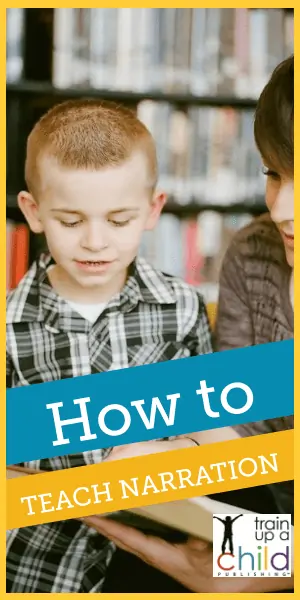
Expect a learning curve when you’re first teaching narration.
If narration is a new activity in your home, allowing for a learning curve is important.
Again, it isn’t necessary for your child to narrate every passage that she reads.
One helpful strategy when beginning narration is to read a chapter or two of a book before beginning narration. This builds interest and helps your student’s immersion into the story. And remember to start teaching narration with short passages of stories.
Also, please be sensitive to your children’s natural gifts. You might have a child that takes quickly to narration and one that struggles. This is normal. It doesn’t mean the one who does it more quickly is “smarter” or the other is not as bright. For the one that struggles, provide more practice over easier passages, especially in the beginning!
For example, I had one child that was more naturally an auditory learner and one who wasn’t. My more auditory child could effortlessly remember and repeat whatever I read. But not so for the other child!
Take those differences into consideration with your children. Be especially encouraging with the one who struggles, and recognize and praise this child’s efforts to narrate well. It may never be easy for the one who finds narration difficult, but always praise the effort and reassure that everything gets better with practice. And sometimes, the child who struggles will excel with other types of narration: such as written narration over what has been read instead of what has been heard.
If your child does not want to narrate, we all have to do things we don’t want to do, right? Stay positive, enthusiastic, and encouraging, and keep narrations short, especially in the beginning.
Do I correct the wrong information when teaching narration?
But what do you do when your child narrates incorrectly? This is a common question! A few strategies for dealing with this are below.
Most importantly, it’s better not to interrupt a narration with corrections.
- Only after praising what was positive about a particular narration and encouraging a child for his efforts can you gently make necessary corrections.
- If you notice a repeated grammatical error, such as a double negative, incorrect subject-verb agreement, etc., make a note to cover that area later during a language arts lesson.
- If your student has many details to remember, such as difficult names, dates, or places, again, it’s perfectly okay to make a list of those things on a whiteboard before the narration.
How to Teach Written Narrations
Fortunately, there are other forms of narration other than oral ones as your kids get older and more experienced with narration. Although, it is always best to begin with oral narrations for the younger child. But you can also occasionally have a younger student draw a picture”showing” what he just read or heard rather than do an oral narration.
Another option, especially for older students (10 or 11 on up), is to provide a written narration over what they have either had read to them or over what they’ve read independently.
The easiest way to start teaching your kids how to do written narrations is to instruct them not to worry about grammar and punctuation until they have written down everything they remember.
Then afterward or during their next day’s writing time, they can go back and clean things up.
Written narrations over reading are also excellent for middle and high school students! In fact, there’s a fantastic benefit to your upper-grade children speaking or writing about what they read about in history, science, math, and language arts! For example:
- Tell me about the steps you are going to take to solve that algebra problem.
- What do you remember about the Battle of Gettysburg that you read about today?
- Define the “setting” of a story, and then describe the setting of To Kill a Mockingbird.
By the way, I want to underscore that narration is helpful in math, even though we don’t often use it in that subject. If you struggle to get a student to understand a math concept, work on getting your child to explain it. This will help you pinpoint where the problems are so you know how to help.
How to Teach Art and Music Narrations
Students can narrate not only from books but also through artwork and music. I know that might seem strange to you, but narrating over art and music will help your student focus on what she is seeing and hearing.
Basically, this is how to teach art and music narrations.
- Tell your child that you are going to have her listen to a piece of music or study a painting.
- Then let her know that after she does that, she will tell you (or write) about the painting or what she heard in the music.
- Remember that you are also studying music when you choose a composer to listen to for a unit, a twelve-week term, or a semester. You could have weekly focused listening times, but you’ll also want to play this composer’s music frequently in the background of other activities (as I mentioned before), such as chore time, mealtime, etc.
- The same goes for picture study. Just having the artwork of a particular artist displayed for a period of time (a unit, term, or a semester) helps your students become familiar with that artist. Weekly focused conversations will be the time for narrations.
See more details about how to teach narration over art and music in the links below.
For more specific information about How to do Picture Study, Picture Study for Older Students, and How to do Music Study, click on the respective links.
As with all narration, your student can narrate orally, write a narration, or draw a picture for his narration. You can also have your younger children simply move to the music!
Another Benefit of Teaching Narration is that Early Narrations help prepare your children to write.
An added benefit of regular narration in those early years is that it helps order children’s minds and prepares them for formal writing lessons once they reach the appropriate age.
The more exposure your children have to hearing, reading, and narrating excellent children’s literature, the more prepared they will be to learn to write.
Narration is such a powerful teaching tool that I hope you’ll teach and practice it regularly in your homeschool! It’s never too late to start. Just remember to begin slowly with short, simple passages. After a few months of regular practice, your students’ recall might amaze you!
Warmly,

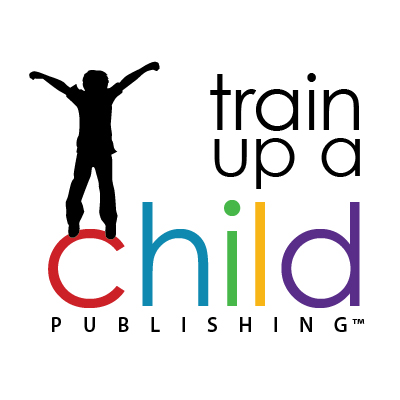

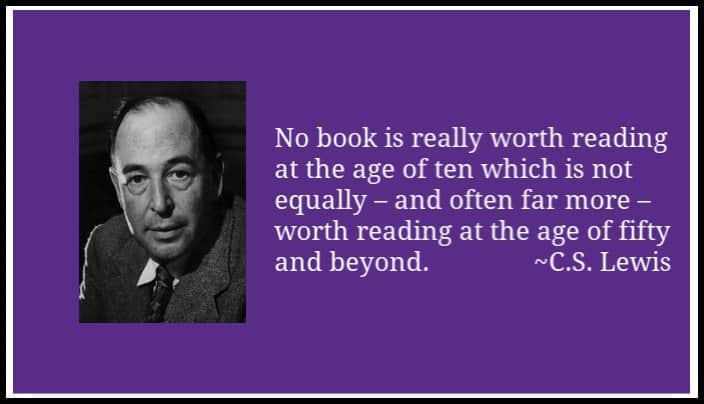
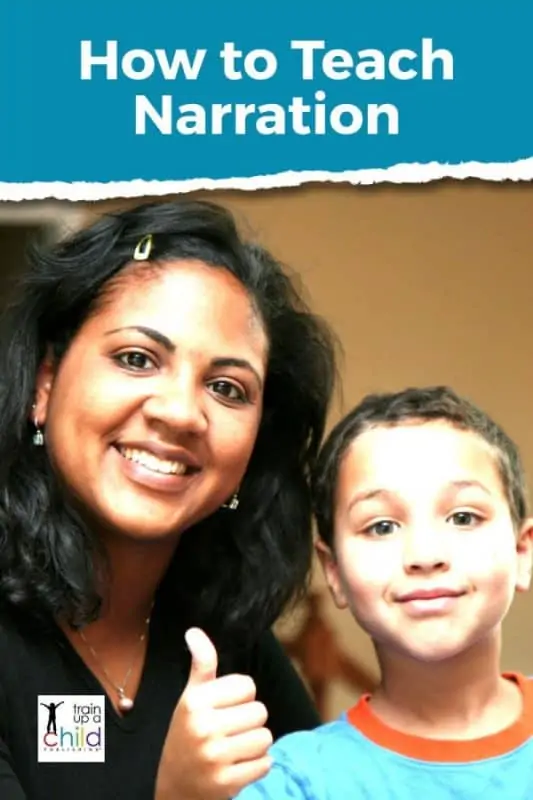
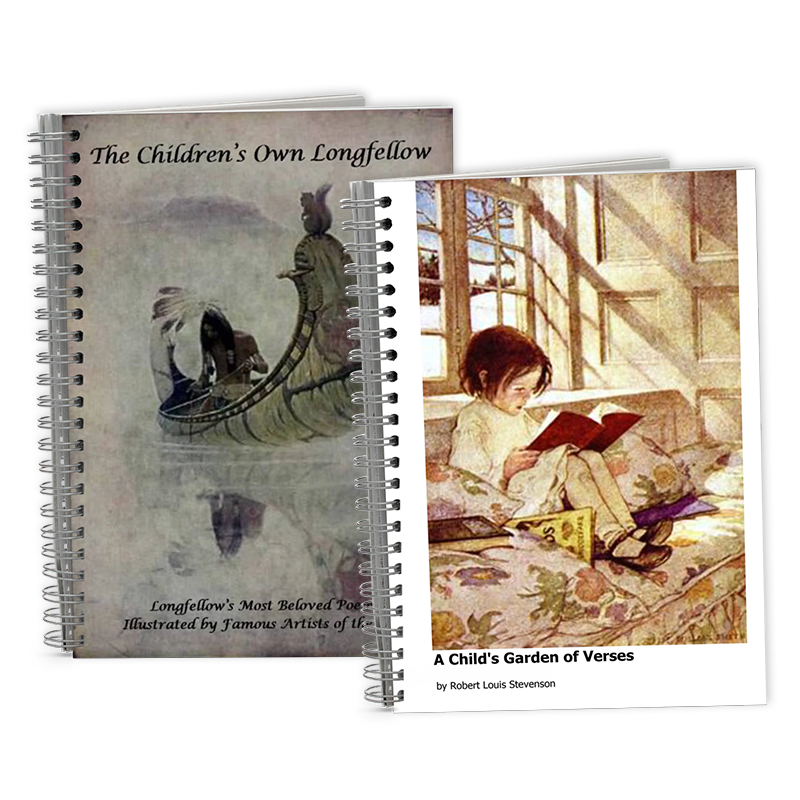
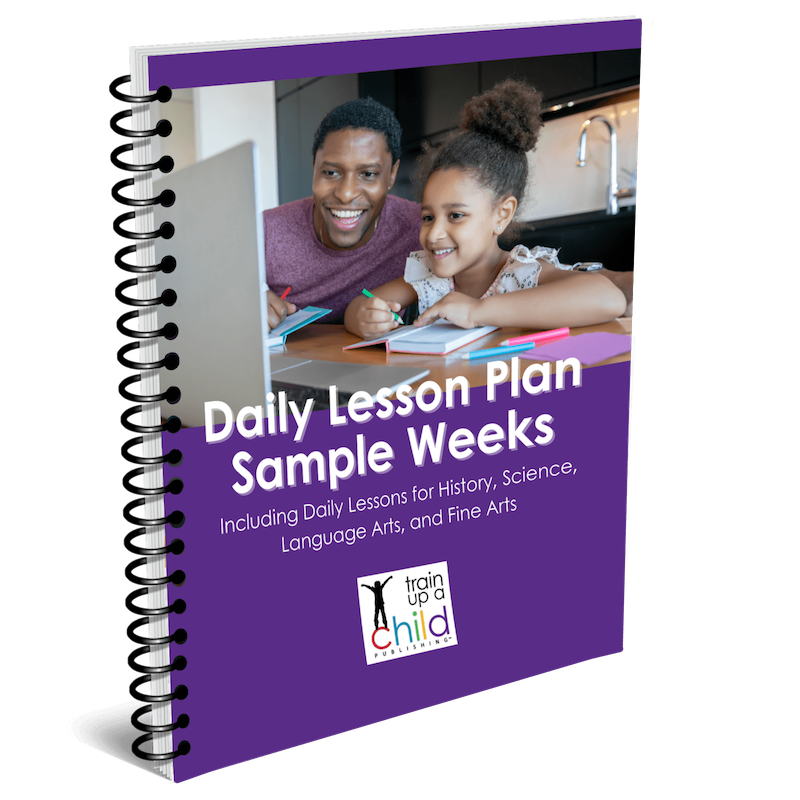
Thank you for your article! I’ve been homeschooling for almost 7 years and listen regularly to some podcasts that mention narration, so I decided to do some research on what it was. There are hours long podcasts of experts teaching how to do narration…but this article was exactly what I needed, a Narration 101 basic understanding! I loved it. I think the narration concepts are perfect for my 8 year old future engineer who gets stuck on many assignments that ask him to “draw a picture” of what you just read…he doesn’t like to free-draw…but he loves to explain things, so I think narration will be great. I’m going to tell my husband what I learned from this article…it will be my first narration 🙂 Thank you so much.
Hi, Amanda, you made my day! I’m thrilled that you were so inspired by my article that you narrated it to your husband. 🙂 It sounds as if narration will be perfect for your future engineer. You’ll be amazed at how narration helps your son absorb what he’s hearing and reading about!
Hi Dana,
Stopped by to say hi. Enjoy your evening. Very informative posts you have here on this blog.
Hi Jennifer! Thank you for stopping by and for your kind comment. Please visit again soon. 🙂
Wow! This is fabulous! Thank you so much for sharing this. I just recently found your site through twitter. I think I randomly asked for CM homeschoolers and someone sent me your twitter handle and I followed your website here! 🙂 I’m so excited! I’m working on spreading the word about your site here because it’s so excellent! 🙂
Well, thank you, Christin! I’m glad my site’s helpful to you and appreciate you sharing it with others!